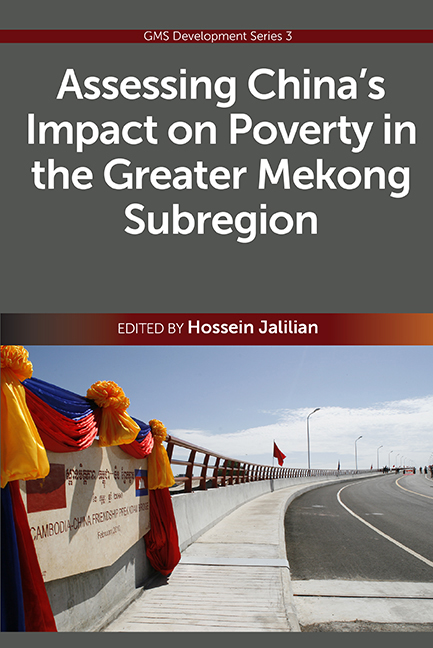3 - Assessing the Impact of GMS Trade on Poverty Reduction in Yunnan Province, China
from PART II - CHINA AND THE GMS-4
Published online by Cambridge University Press: 21 October 2015
Summary
INTRODUCTION
Overview
Located in the southwest border area of China, Yunnan province is one of the key economies that constitute the GMS area of regional cooperation, bordering Myanmar to the west, and Laos and Vietnam to the south, with a boundary of 4,060 kilometres. The total size of Yunnan is about 394,000 square kilometres. Its population amounts to 47.5 million, one-third of which is composed of ethnic minorities. As a landlocked province, it is listed in the category of underdeveloped areas. The gross domestic product (GDP) of Yunnan province was RMB570.0 billion in 2008, ranking it twentyfifth of China's thirty-four provinces and regions. The poor population in Yunnan accounted for 13.9 per cent of China's total poor in 2008.
As early as the 1990s, the Yunnan government highlighted an exportoriented economic strategy as a priority for economic development and poverty reduction. In addition, the province has participated in regional and subregional cooperation such as Yunnan-North Laos (nine provinces northern Laos), Yunnan-North Vietnam (four provincial cities in northern Vietnam), and Yunnan-North Thailand (eight provinces in northern Thailand). Apart from this bilateral cooperation, Yunnan's participation in the GMS Programme assisted by the Asian Development Bank (ADB) aims to establish it as the gateway to Southeast Asia by developing its infrastructure and promoting the free flow of goods and people in the subregion.
However, little research has been done on assessing the poverty reduction effect of Yunnan's participation in the GMS. By applying the gravity model, Poncet (2006) finds that GMS integration contributed to the trade relationship between Yunnan and other GMS countries to some degree over the period 1988 to 1999, but the effects varied between different countries. This chapter assesses the impact of the GMS on Yunnan's international trade and poverty reduction at both macro and micro levels. At the macro level, Poncet's (ibid.) methodology is used to evaluate the impact of subregional cooperation on trade between Yunnan and other GMS countries. At the micro level, the province's major export products are selected to identify the quantitative and qualitative poverty reduction effect of trade on those specific industries.
- Type
- Chapter
- Information
- Publisher: ISEAS–Yusof Ishak InstitutePrint publication year: 2013

